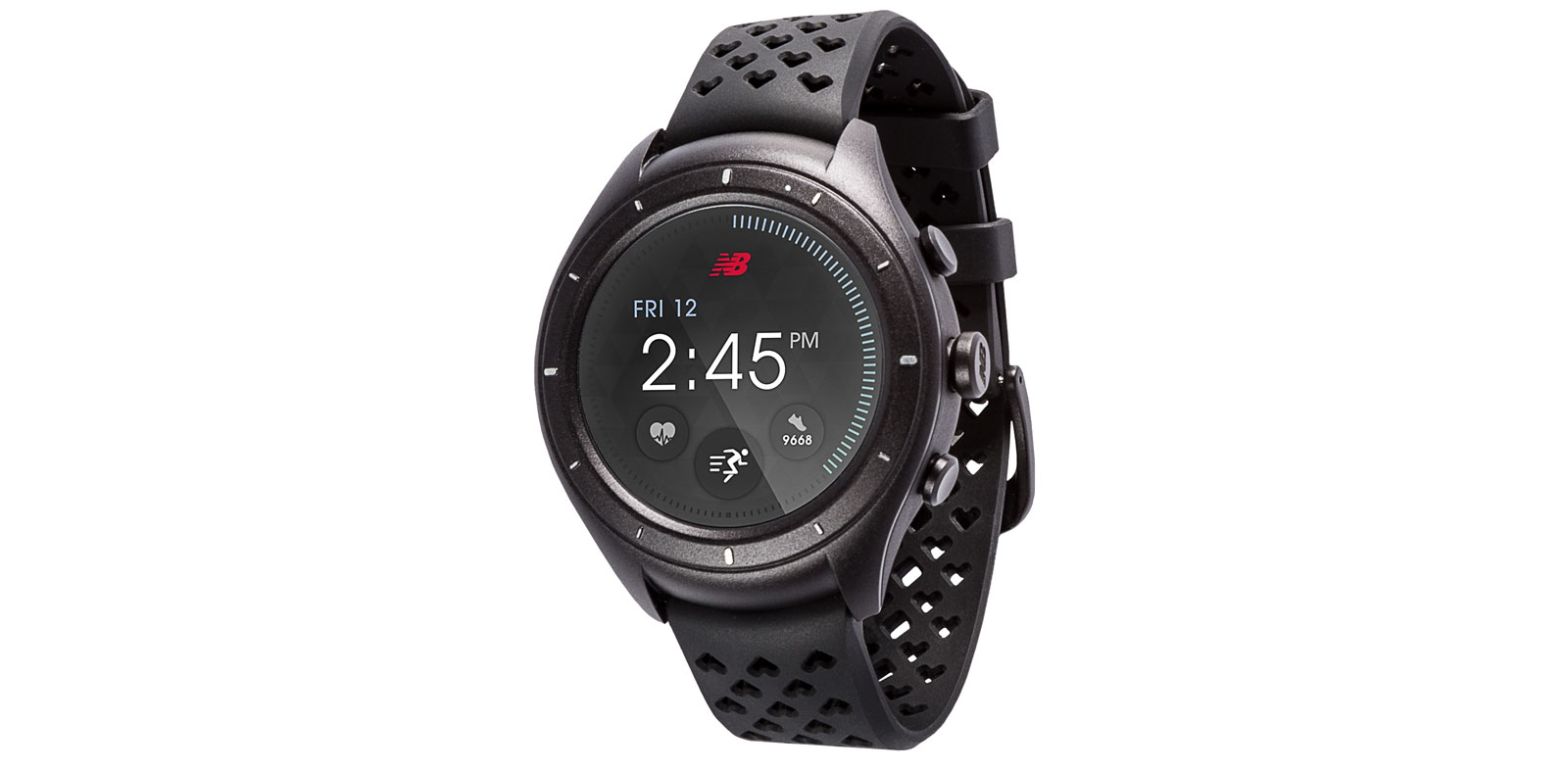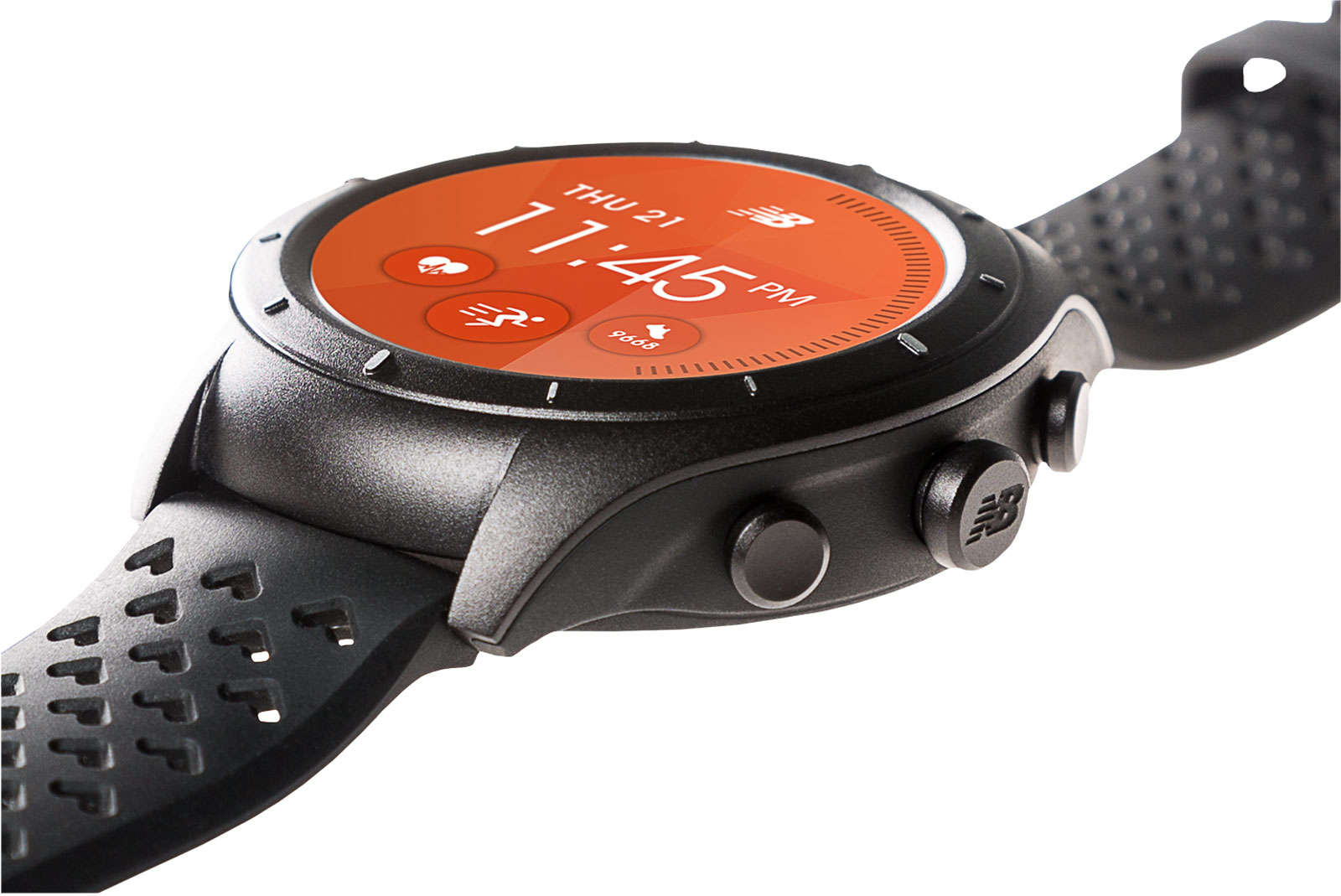
It was nearly a year ago to the day that Intel and New Balance announced they were teaming up to launch the New Balance RunIQ, an Android Wear watch for fitness enthusiasts. Now, at CES 2017, we're finally getting a good look at the finished product. The device is designed to be used by runners looking for an accessory for their fancy sneakers -- also made by New Balance, of course. But beyond that, it's not clear what this device does that so many other Android Wear watches can't already do.
Take the spec list, for starters: It's largely the same as other watches on the market. Under the hood there's 512MB of RAM plus 4GB of built-in storage, all tucked behind a 1.39-inch AMOLED display. On the underside of the case, you'll find an optical heart-rate monitor, which works alongside a gyroscope and accelerometer. Also inside is a GPS module and Intel's Atom Z34XX processor -- not to mention a battery rated to last 24 hours on a charge, or five house if you use GPS and heart rate monitoring.
On the software side, the watch syncs with Strava and has a one-tap lap button for easily timing your intervals on the track. You can also monitor your heart rate to make sure that you're always staying within the zone during those longer runs. That 4GB of storage can be used to sync and play tracks from Google Play Music, so long as you have Bluetooth headphones. Then again, though, that's true of most other Android wearables released in the last year or so.
The RunIQ is also a sign of how Intel will continue to operate in a wearables space that may have lost its luster. In late 2016, TechCrunch reported that Intel was about to lay off a big chunk of its wearables team in the wake of Basis' immolation. Intel denied the report, but given that the chipmaker clearly doesn't have faith in its own brand, it seems like it'll continue to partner with third parties. The Tag Heuer Connected was a modest success, and New Balance can run the hard yards promoting and selling gear in a way that Intel can't. It seems like the future of Intel as a wearables company is one where it operates behind the scenes -- a shame for those of us who were hoping that Basis would rise like a phoenix from the flames.
At the same time as Intel and New Balance launch RunIQ, New Balance and Jabra are teaming up to release the PaceIQ -- a pair of Bluetooth headphones that come with a dedicated button for real-time audio coaching. All told, it looks quite similar to the existing Jabra Sport Pace. Indeed, Jabra has previous experience in this market, with a set of Sports Coach in-ears that track your fitness and offer the same audio-assistance.

If you'd like to get in on an Intel-produced smartwatch and don't have the thousands for a Tag Heuer, then this is probably your best option. Pre-orders for the device will begin on January 5th with sales kicking off at New Balance stores and online starting February 1st. It'll set you back $300. PaceIQ, meanwhile, also drops February 1st and will set you back $110.
Click here to catch up on the latest news from CES 2017.